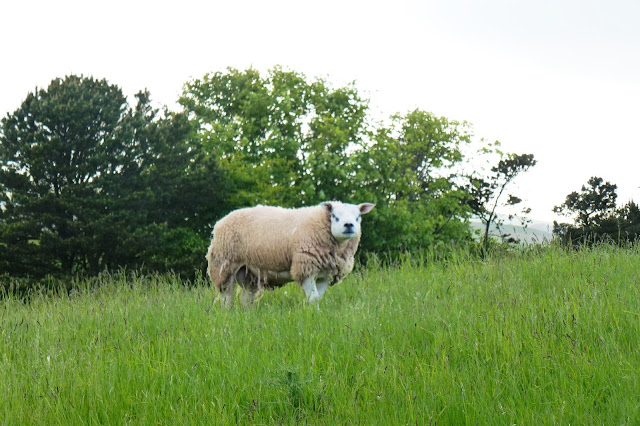Our trip today was out to Rosslyn Chapel, formerly known as the Collegiate Chapel of St Matthew, a 15th-century chapel located at the village of Roslin.
The chapel was founded as a Catholic collegiate church, with between four and six ordained canons and two boy choristers, in the mid-15th century. The chapel was founded by William Sinclair, 1st Earl of Caithness of the Scoto-Norman Sinclair family.
The purpose of the college was to celebrate the Divine Office throughout the day and night and also to celebrate Mass for all the faithful departed, including the deceased members of the Sinclair family. During this period the rich heritage of plainsong, a single melodic line, or polyphony, vocal harmony, would be used to enrich the singing of the liturgy. An endowment was made that would pay for the upkeep of the priests and choristers in perpetuity and they also had parochial responsibilities.
After the Scottish Reformation in 1560, Roman Catholic worship in the chapel was brought to an end, although the Sinclair family continued to be Roman Catholics until the early 18th century. From that time the chapel was closed to public worship until 1861, when it was opened again as a place of worship according to the rites of the Scottish Episcopal Church, a member church of the Anglican Churches.
Since the late 1980s, the chapel has also featured in speculative theories concerning a connection of Freemasonry, the Knights Templar and the Holy Grail. It was prominently featured in the 2003 bestselling novel The Da Vinci Code and its 2006 film adaptation.
I have to say two things disappointed me about Rosslyn Chapel - one was that you were not allowed to take pictures inside and two, that everything including the chapel was much smaller than I anticipated. As an example, the "green man face" that is often seen was only about 6" across, yet everything I have seen makes it appear quite a bit larger.
some exterior shots
lots of spires on this one and each one different
same goes for the windows
details everywhere
driving along we spied this little hovel off in the distance - turns out it is Floors Castle, the largest inhabited castle in Scotland, built in about 1720
what you looking at???
Berwick-on-Tweed, on the border between England and Scotland and where tweed fabric was woven
an old lime kiln to the right and the new modern nuclear power plant behind at Torness, Dunbar, Scotland
we were on the North Atlantic coast and we felt a distinct temperature
change here with a cold wind blowing
a lonely cross on a promentory, we did not walk out to it, but my guess is
that it commemorates lives lost at sea
looking down into the lime kiln
and this is the bottom where the fires were set - there were four of these openings at the bottom - one on each side
a tower disappearing into a low hanging cloud bank
a massive oil tanker passing in the distance, this was one of four that were following each other, maybe a two miles apart - this is what it will look like if the LNG and oil ports are built here on the west coast
this sheep breed had the strangest looking face
Tantallon Castle - built around 1300 - became the home of the "Red Douglases" - the Douglas clan split in the late 1300s with one branch becoming known as the "Black Douglases" (lead by legitimate heirs) and another the "Red Douglases" (lead by an illegitimate heir)
Bass Rock - The rock is currently uninhabited, but historically has been settled by an early Christian hermit, and later was the site of an important castle, which after the Commonwealth period was used as a prison. A lighthouse was built in 1902. The island is the home of a large colony of gannets - the largest seabird of the North Atlantic.
random shore shots
North Berwick Law - a volcanic plug - The summit bears remnants of an Iron Age hill fort, and the ruins of later military buildings that were once used by lookouts in both the Napoleonic Wars, and in World War II.
A whale's jawbone has stood at the top since 1709. In June 2005, having been there since 1933, the last whale's jawbone collapsed after rotting away.
On 26 June 2008, a fibreglass replica whale bone was installed.

















































No comments:
Post a Comment